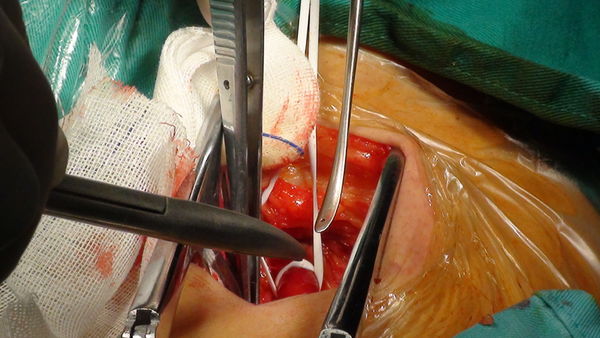As our body ages, plaque begins to build up inside the arteries. Plaque is a waxy substance that decreases the diameter of the arteries and reduces the flow of blood in them. This condition is known as atherosclerosis, and it can affect any blood vessel in the body. If it affects the coronary artery, it leads to a condition known as Coronary Heart Disease. As the plaque hardens, parts of it often rupture and break. This can cause pain in the heart muscles, which is felt as chest pain and discomfort. This is known as Angina. If the broken blood clot reaches the heart, it can cause a heart attack.
Angioplasty is a medical procedure that helps reverse this process and restore the flow of blood to the heart. This is a slightly complex procedure in which a catheter is threaded into the affected artery and a balloon on its tip is inflated. This helps press the plaque against the arteries so that more space is available for the blood to flow.

Angioplasty
1. Angioplasty Surgery
Angioplasty surgery was first performed in the late 1970s. Though it is sometimes referred to as a surgery, angioplasty is a nonsurgical procedure performed in the clinic of a cardiologist. It is not an open heart surgery. It is usually not even performed under general anesthesia. The recovery period is relatively short as well. However, not everyone should get this procedure performed. For those who have severe coronary heart disease or very poor functioning of the heart valves, coronary artery bypass surgery is a more viable option. Angioplasty is usually only used as an emergency treatment for a heart attack.
2. Procedure
Coronary angioplasty is a clinical procedure and is performed in a clinical setting. The doctor usually performs a coronary angiography to find out the location of plaque formation and the extent to which the artery has been blocked by it. The test involves the use of a special radioactive dye that illuminates the path of blood circulation and the resulting imagery shows the points where the artery is blocked.
During the imaging test, a small flexible tube, known as a catheter, is inserted into an artery. This catheter is then moved to the coronary artery, or the artery with the blockage. This special catheter has a balloon on the tip and a special mesh tube, also known as a stent, wrapped around the deflated balloon. When catheter reaches the blocked spot, the balloon is inflated and the plaque is compressed. The stent also expands and attaches itself to the arterial wall. When the balloon then deflates, the stent remains attached to the arterial wall, keeping the plaque compressed and increasing the diameter of the artery so that normal volume of blood can pass through it. This improves blood flow through the artery and improves overall blood circulation in the body as well. The presence of the stent on the arterial walls reduces the risk of narrowing and blocking of the artery again. If the need arises, the stent can also be coated with a medicine that slowly releases into the arteries. This is a special medicine that prevents formation of scar tissue in the arteries after an angioplasty. These special stents are known as drug eluting stents.
3. Risks of Angioplasty
Angioplasty has lately become a very frequently used medical procedure. After the procedure is performed, there is a possibility of increased tissue growth in the artery. This condition is known as restenosis, and almost 30% of people who undergo angioplasty experience it.

![Diseases, Symptoms, tcm, [tcmwindow.com]](/uploadFile/adImg/2015/11/11/f5cbfcc0-4df5-4646-9b9a-f316651a0199.jpg)





